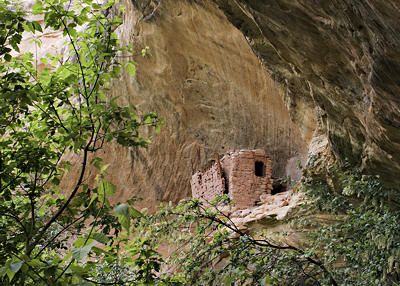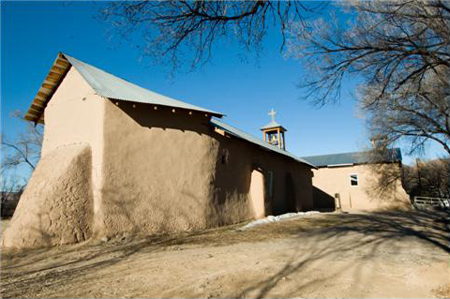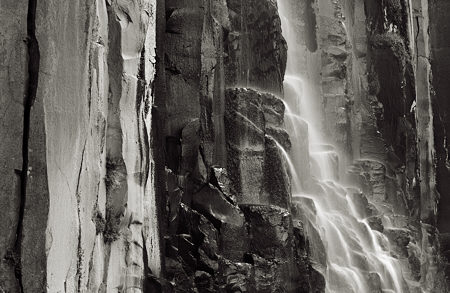Posted by Doug Plummer on March 20th, 2007

Photographing the Big Sur coast can be daunting. There’s the pesky issue of it being so spectacular. Every turnout looks like a Sierra Club calendar photo. How do I make make something of my own from these environs? What I found out was, to not try very hard at any of it. I found that a sort of creative indirection was the best way to handle the gorgeous scenery.
It is not my first trip to the region. About a decade ago, I got myself a 4×5 camera. The intent was to do a “beginner’s mind” thing with my photography, start over with an unfamiliar technology and see what kind of pictures I would make if I had to compose them upside down and under a dark cloth. I was very intent on what I was doing. I had a plan and a purpose. In the end, I made the expected sort of photographs you get when you trundle around the central California coast with a 4×5. After about three years I figured out that large format was not advancing my photography anywhere I wanted it to go, and I went back to smaller formats.
Another trip I did with stock photography in mind. Those spectacular pullouts on Highway One were the point, as were the forests and the towns and the tourist destinations. I had a plan, and a place for the photographs.
This time, I had no plan. I responded to the whim of my inner compass as Robin and I drove from LA to SF. In southern California I wandered slowly through the brushy canyons, when I wasn’t making photos inside of art museums. Morro Bay was about empty water and sky. At Pfeiffer Beach, I turned my back on the surf and rocks and headed for the blown down mess of cypress trees behind the dunes. It was hard, unrelenting sunlight, the worst sort of conditions for this kind of environment. I messed around without expecting too much from it. At the state parks in Big Sur I birded along the rivers, casually shooting where I was, without a deep fixation on anything in particular. Sometimes I did become fixated; I had great fun on Weston Beach in Pt. Lobos, pretending I was channelling Edward Weston himself making poignant, pregnant abstractions. I even let myself photograph the spectacular views, on a tripod and with a polarizer filter. Hey, might as well do it right.
A great thing about an aimless trip of this sort is that the pressure’s off. Image making is still the compelling activity, but there is a deliberate purposelessness about the effort. It allows me to do that most important work of an artist—to fail a lot. I explored a lot of visual dead ends, I made abundant bad pictures, I responded to what was around me, but most of those responses missed the mark. I joke with my clients that I’m a good photographer because I’m a bad photographer a lot more often. It’s more true for most of us than we might like to admit. On a trip like this, I can afford to indulge these apparently fruitless explorations.
It is important work nonetheless. This is where what’s next happens. Sam Abell, a mentor of mine, puts it as “shooting ahead of ourselves.” The dominant theme in my work now started unrecognized while I was busy with something else. One of my dead ends might become an important part of my work henceforth. Or not. My job is to indulge the aimlessness whenever I have the opportunity. It’s like the basic rule of investing—make sure you have a diversified portfolio. I am adding to the savings account on a trip of this sort. The return will come sometime when I don’t expect it.

Posted by Steve Durbin on March 13th, 2007

It is said you can never step into the same river twice. The river flows on, the world changes. But I have a chance next month to return to Anasazi country where I photographed a year ago, and water seldom flows there at all. Conditions will probably be much the same, unless there’s a break from the hot, clear weather of last time. I will probably see some of the same ruins I photographed before, but I’m sure to see others as well. I am very interested to see what will come out of a return visit.
more… »
Posted by Richard Rothstein on March 11th, 2007

As I was wandering down 10th Avenue a couple of days ago, camera in hand, marveling at the amazing variety of shapes, colors and play of light I thought this is an artist’s guilty pleasure. I felt terribly lazy. I know I have a talented eye, but it is so easy to capture compositions and brilliant visuals in a matter of minutes compared to many 20th and 21st Century painters who struggled amd struggle for hours, days and even months to capture on canvas what an observant photographer can capture in a second.

Is time a factor in great art? And if not, why not? Picasso spit out paintings like a fecund rodent. Van Gogh produced something like 40 paintings in the last five minutes of his life–well–something like that. Other artists labor and struggle for months over one painting. The photographer is almost the Henry Ford Model T production line of work, especially with digital photography. Click. Click. Click. Delete. Click. Delete. Click, I actually find myself feeling guilty. I shouldn’t enjoy it so much and it should take much longer. This morning I was paid $1,000 plus a percentage for agreeing to post an online gallery with narration of 12 of my photographs in the Queer New York at Night series. Easiest and fastest $1,000 I’ve ever made. Guilt. And Jewish guilt which is the most refined vintage and vineyard of guilt, like a Vosne Romanee of guilt.
more… »
Posted by Birgit Zipser on March 9th, 2007
email from my friend Ginger with whom I share love of photography and interest in holistic medicine:
Thank you for sharing Richard’s photos and autobiographical narrative. It is courageous and inspiring at the same time. Art is and can be healing. For me the camera is still a bit of a shield…and so I’m never quite happy with what I do. A shield from being seen and conversely not seeing fully.

more… »
Posted by Doug Plummer on March 6th, 2007
I was planning on posting this anyway, apropos of leaving on vacation with my wife, Robin, today. Then I saw Steve Durbin’s entry, and realized it would be the perfect follow-up. It’s a piece she wrote for my blog last year, but I think only 30 people saw it at the time. Her advice deserves a wider audience.
Advice to photographers’ significant others:
- When on a shoot or on the road, always bring food, water, and a book. If the light becomes “perfect” (usually early or late in the day, or if it’s overcast in just the right way), your photog will be captivated by it. Do insist on your right to go to the bathroom, be dropped at the hotel before the light comes in, or have your basic needs taken care of.
- Don’t take it personally when he says, “The light is beautiful on you.” You could be a rock, or a stump, or a wall. But he probably loves you anyway.
- Don’t take it personally when you become the “foreground element”. It’s not about you. You’re just the one that’s there.
- Do take it personally, in the best way, if you become the object of many studies. Photographers connect with the world through their cameras. It is another way of being known.
- You don’t have to like all of the work, if you like the photographer. Doug has one body of work that is too visually complex for my brain to process. None of this work is in the living room. If your person needs you to love every picture, send him to therapy. If you think you need to love every picture, go yourself.
- Get used to schedule changes. Your photog might find out on Tuesday that he’s going to Ireland for two weeks on Thursday. Have friends to fill in the gap. Accommodations I figured out included putting in a watering system for the garden, hiring people to do some of his tasks, and letting myself be pissed about the changes, until I’m not.
- Keep in contact. In most places in the developed world, there are local cell phones for sale. Speak often. Email. Whine. Say endearments. Listen to whining. Support. Ask for support. It’s good glue. We talk almost every day. I especially like to bask in Doug’s excitement when he’s on a shoot and it’s going well. He does bliss well.
- It’s okay to demand that the geek speak stops, when you’ve run out of patience for it. Especially if they’re talking about digital workflows. It’s rude for people to speak in a language not shared by others.
- When he comes back into town with 4,000 images to process, make some dates to connect, but don’t expect that he’ll be fully there until the images are on a disc and sent away. Then you can have the coming-back fight and really connect.
- It’s OK to play the wife role, whatever your gender, on occasion. I do this at openings and print sales and during the big post-shoot image processing. Other times, be who you are, more than wife. Doug is the wife at my conferences and book signings and when I’m writing. It’s OK to be flexible. Don’t get caught up in the role. It’s not a full enough identity for anyone.
- If you’re traveling together, don’t think you have to be joined at the hip. Pursue your own interests, then meet later. Do ask your person to leave the camera in the room or in the bag for a meal or an evening. Suggesting that making contact with you might allow your photog to “get lucky” can help this occur. It works for me.
- If he’s been gone for a long time, and you’ve had the house to yourself, expect conflict on re-entry. It’s normal. It’s predictable. Just have it. He’s invading your space, after all.
- Dont worry about the “Bridges of Madison County” scenario. You know how he really is.
- A story: Several years ago, outside of Banff, after a full day of shooting, the light changed and Doug became enchanted. I was really hungry. After 45 minutes, I demanded to be driven into town for food. Reluctantly, Doug packed up his gear, and we drove to a 2nd-floor sushi bar. I was facing the window. The light was magical. We ordered anyway. Before the fish came, I saw a rainbow over Mount Rundle. I said, “Doug, get your gear and get out there.” He did. 20 minutes later he returned. Three minutes later, the second rainbow appeared, arcing over the other. “Get back out there, now!” The waiter didn’t know what was going on. He kept asking if everything was alright. He didn’t understand my explanation: “My husband is a photographer.”
Robin’s blog (on therapy issues, for other therapists–you think photographer’s use geekspeak?) is at Trauma & Attachment.
Posted by Steve Durbin on March 6th, 2007

My landscape photography has grown out of activities I would engage in anyway. I’ve always loved hiking, be it in the mountains, the woods, the desert — anywhere. These days I usually have my camera along. Sometimes I’ll be in an area I suspect might be interesting photographically, but usually I’m just in a place I want to explore. Either way, I don’t feel cheated if I take no pictures at all, and I’ve never had a bad time. But I have found a difference between productive and unproductive outings. The key predictor is whether I’m alone.
more… »
Posted by Richard Rothstein on March 4th, 2007
I’ve recently taken to carrying my Canon Elph around during some of my late night prowling. Among other things, I’m fascinated by the interesting results you can achieve with a simple digital camera in the absence of light and minus the flash. Actually, while I may successfully frame a shot in almost complete darkness, it isn’t until I get home and load the photos on my computer that I discover many of the interesting details. In fact, I’m often delighted and surprised by the results, revealing scenes that my naked eye failed to see. Sometimes the effects are ghostly and othertimes quite erotic (at least to a queer eye.)


more… »








